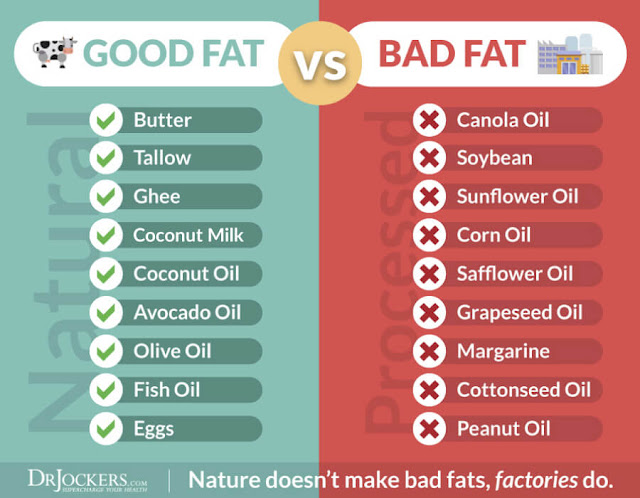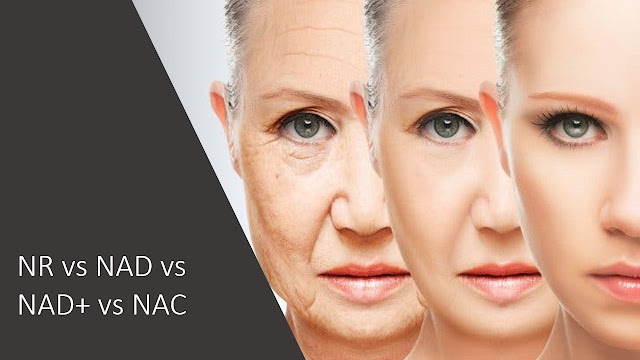Best Anti Inflammatory Foods 2024: How to Choose
Food is medicine. Meaning that what you put in your body can affect you just like popping a pill can. Chronic inflammation is the low-level inflammation in your body that causes everything from heart disease to cancer to Alzheimer’s to arthritis. Hence, reducing that inflammation is a good thing for your health.
Inflammation can be triggered by inflammatory foods, which are foods that contain elements your body perceives as foreign or threatening. You can avoid inflammatory foods and add more anti-inflammatory foods to your diet to help lower your risk of inflammation.

Researchers have identified certain foods that can help control inflammation. Many of them are found in the so-called Mediterranean diet, which emphasizes fish, vegetables and olive oil, among other staples.
Certain types of fish are rich in inflammation-fighting omega-3 fatty acids, which reduce C-reactive protein (CRP) and interleukin-6, two inflammatory proteins in your body.
How much: At least 3 to 4 ounces, twice a week
Best sources: Salmon, tuna, sardines, anchovies and other cold-water fish
Eat Your Fruits and Veggies
Fruits and vegetables are packed with antioxidants, which support the immune system – the body’s natural defense system – and may help fight inflammation.
How much: At least 1½ to 2 cups of fruit and 2 to 3 cups of veggies per meal
Best sources: Colorful foods such as blueberries, blackberries, cherries, strawberries, spinach, kale and broccoli
Nuts and Seeds
Nuts are full of inflammation-fighting monounsaturated fat, protein and filling fiber, too – a bonus if you’re trying to lose a few pounds.
How much: Eat 1.5 ounces of nuts daily (about a handful)
Best sources: Walnuts, pine nuts, pistachios and almonds
Beans
Beans have several antioxidant and anti-inflammatory compounds. They’re a low-cost source of fiber, protein, folic acid and minerals such as magnesium, iron, zinc and potassium.
How much: At least one cup, twice a week
Best sources: Try pinto, black, red kidney and garbanzo beans
Olive Oil
Olive oil contains heart-healthy monounsaturated fat, antioxidants and oleocanthal, a compound that can lower inflammation and pain.
How much: Two to three tablespoons per day for cooking or in salad dressings or other dishes
Best sources: Extra virgin olive oil is less refined and processed. It retains more nutrients than standard varieties. For optimal freshness and quality, opt for oils packaged in dark bottles with a certification or seal (COOC, North American Olive Oil Seal, DOP) and harvest date close to the purchase date.
Onions
Onions are packed with beneficial antioxidants. They may also reduce inflammation, heart disease risk and LDL, or “bad” cholesterol. Try them sautéed, grilled or raw in salads, stir-fries, whole-wheat pasta dishes or sandwiches.
Nightshade Vegetables
Nightshade vegetables – eggplant, tomatoes, peppers and potatoes – are central to Mediterranean cuisine. Some people believe they trigger arthritis flares, but there’s limited scientific evidence to support this theory. Try cutting nightshades from your diet for two weeks to see if symptoms improve.
Fiber
Fiber lowers C-reactive protein (CRP), a substance in the blood that indicates inflammation. Getting fiber from foods lowers CRP levels more than taking fiber supplements. Foods that have carotenoids, the antioxidants that give carrots, peppers and some fruits their color, are quite good at lowering CRP.
Avoid Processed Food
Processed foods such as cookies, chips and other snacks can be high in unhealthy fats, which are linked with inflammation. Opt for fresh fruit instead. Canned goods – vegetables and soups – are often high in sodium, which boosts blood pressure. Look for low sodium options, or go with fresh or frozen vegetables.
Cut the Salt
There are conflicting reports about just how bad excess salt is for us. We know it causes fluid retention – one of many factors that can lead to high blood pressure. Also, corticosteroids, often used to treat RA, can cause the body to retain more sodium. So play it safe and hold the salt when possible.
If you have chronic pain, try your hand at a number of different dietary approaches. Try eating low DII foods and see how that impacts your pain. Try low-carb and see how that works. You can also consider trying a Fasting Mimicking Diet like Prolon to see how that works. All of these have been shown to reduce inflammation and some of these work better for some people than others.
Reference: https://www.arthritis.org/health-wellness/healthy-living/nutrition/anti-inflammatory/anti-inflammatory-diet

Anti-Inflammatory Diet
Researchers have identified certain foods that can help control inflammation. Many of them are found in the so-called Mediterranean diet, which emphasizes fish, vegetables and olive oil, among other staples.
There’s a standardized research tool that’s updated regularly that allows anybody to see if they’re eating foods we know cause chronic inflammation. This is called the The Dietary Inflammatory Index or DII. The choices of pro-inflammatory foods were initially based on studies showing that certain foods like trans-fatty acids (unsaturated fats) caused a spike in serum inflammatory markers in people.
Fish and Omega-3 fatty acids
Fish and Omega-3 fatty acids
Certain types of fish are rich in inflammation-fighting omega-3 fatty acids, which reduce C-reactive protein (CRP) and interleukin-6, two inflammatory proteins in your body.
How much: At least 3 to 4 ounces, twice a week
Best sources: Salmon, tuna, sardines, anchovies and other cold-water fish
Eat Your Fruits and Veggies
Fruits and vegetables are packed with antioxidants, which support the immune system – the body’s natural defense system – and may help fight inflammation.
How much: At least 1½ to 2 cups of fruit and 2 to 3 cups of veggies per meal
Best sources: Colorful foods such as blueberries, blackberries, cherries, strawberries, spinach, kale and broccoli
Nuts and Seeds
Nuts are full of inflammation-fighting monounsaturated fat, protein and filling fiber, too – a bonus if you’re trying to lose a few pounds.
How much: Eat 1.5 ounces of nuts daily (about a handful)
Best sources: Walnuts, pine nuts, pistachios and almonds
Beans
Beans have several antioxidant and anti-inflammatory compounds. They’re a low-cost source of fiber, protein, folic acid and minerals such as magnesium, iron, zinc and potassium.
How much: At least one cup, twice a week
Best sources: Try pinto, black, red kidney and garbanzo beans
Olive Oil
Olive oil contains heart-healthy monounsaturated fat, antioxidants and oleocanthal, a compound that can lower inflammation and pain.
How much: Two to three tablespoons per day for cooking or in salad dressings or other dishes
Best sources: Extra virgin olive oil is less refined and processed. It retains more nutrients than standard varieties. For optimal freshness and quality, opt for oils packaged in dark bottles with a certification or seal (COOC, North American Olive Oil Seal, DOP) and harvest date close to the purchase date.
Onions
Onions are packed with beneficial antioxidants. They may also reduce inflammation, heart disease risk and LDL, or “bad” cholesterol. Try them sautéed, grilled or raw in salads, stir-fries, whole-wheat pasta dishes or sandwiches.
Nightshade Vegetables
Nightshade vegetables – eggplant, tomatoes, peppers and potatoes – are central to Mediterranean cuisine. Some people believe they trigger arthritis flares, but there’s limited scientific evidence to support this theory. Try cutting nightshades from your diet for two weeks to see if symptoms improve.
Fiber
Fiber lowers C-reactive protein (CRP), a substance in the blood that indicates inflammation. Getting fiber from foods lowers CRP levels more than taking fiber supplements. Foods that have carotenoids, the antioxidants that give carrots, peppers and some fruits their color, are quite good at lowering CRP.
Avoid Processed Food
Processed foods such as cookies, chips and other snacks can be high in unhealthy fats, which are linked with inflammation. Opt for fresh fruit instead. Canned goods – vegetables and soups – are often high in sodium, which boosts blood pressure. Look for low sodium options, or go with fresh or frozen vegetables.
Cut the Salt
There are conflicting reports about just how bad excess salt is for us. We know it causes fluid retention – one of many factors that can lead to high blood pressure. Also, corticosteroids, often used to treat RA, can cause the body to retain more sodium. So play it safe and hold the salt when possible.
The DII (Dietary Inflammatory Index) vs. Low-Carb Battle
The DII would have you eat a certain way while a low-carb diet would have you eat another. For example, fruits and veggies are low DII foods. However, while an apple may be a good low glycemic (low-carb) food, you wouldn’t want to pig out on apples as that would eventually be too many carbs. A banana is also a fruit that has a low DII, but is generally considered a high-glycemic fruit. In addition, while eating cholesterol-laden foods is a no-no for DII, it would be encouraged in a low-carb diet.
The DII would have you eat a certain way while a low-carb diet would have you eat another. For example, fruits and veggies are low DII foods. However, while an apple may be a good low glycemic (low-carb) food, you wouldn’t want to pig out on apples as that would eventually be too many carbs. A banana is also a fruit that has a low DII, but is generally considered a high-glycemic fruit. In addition, while eating cholesterol-laden foods is a no-no for DII, it would be encouraged in a low-carb diet.
Choose My Plate
The Food Pyramid many of us grew up with has been replaced with a colorful plate that emphasizes proper proportions. One important message: Fill half your plate with vegetables. Learn more at www.choosemyplate.gov.
Reference: https://www.arthritis.org/health-wellness/healthy-living/nutrition/anti-inflammatory/anti-inflammatory-diet
Related: Best Anti Inflammatory Supplements







Comments